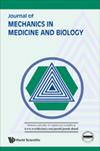An emotion recognition model based on long short-term memory networks and EEG signals and its application in parametric design
IF 0.6
4区 医学
Q4 BIOPHYSICS
引用次数: 0
Abstract
One of the design objectives of a product is to create a positive emotional user experience. Through careful design, the product can evoke emotional resonance in users and stimulate their pleasure and satisfaction. Therefore, emotion recognition is crucial for parameterized product design. Considering that emotion recognition based on electroencephalogram (EEG) signals is more objective and accurate compared to methods such as text and surveys, this paper proposes an emotion analysis model based on long short-term memory (LSTM) and EEG and applies it to parameterized design. The main contributions of this paper are as follows. (1) Constructing a high-accuracy emotion recognition model. First, EEG data reflecting the characteristic patterns of brain activities in different emotional states are collected through EEG electrodes. Then, the EEG data are input into the LSTM network for training, enabling it to learn and capture the features associated with emotional states. During the training process, the model learns to extract crucial emotional features from the EEG data for emotion state recognition. This model can automatically learn emotional features, handle long-term dependencies and provide a more accurate and reliable solution for emotion recognition tasks. (2) Creating an EEG dataset specifically for evaluating emotions related to a product and using the trained emotion recognition model to classify this dataset, obtaining emotion classification results. The emotion classification results can be used to determine which parameter designs in product development need to be retained or discarded. These parameter designs can involve aspects such as user experience, functionality, aesthetics, usability and user-friendliness. Decisions can be made based on the emotion classification results to improve the quality and user satisfaction of the product.基于长短期记忆网络和脑电图信号的情绪识别模型及其在参数化设计中的应用
产品的设计目标之一是创造一种积极的情感用户体验。通过精心的设计,唤起用户的情感共鸣,激发用户的愉悦感和满足感。因此,情感识别对于参数化产品设计至关重要。考虑到基于脑电图(EEG)信号的情绪识别相对于文本和调查等方法更客观准确,本文提出了一种基于长短期记忆(LSTM)和脑电图的情绪分析模型,并将其应用于参数化设计。本文的主要贡献如下:(1)构建高精度情绪识别模型。首先,通过脑电电极采集反映不同情绪状态下大脑活动特征模式的脑电数据。然后,将EEG数据输入LSTM网络进行训练,使其能够学习和捕捉与情绪状态相关的特征。在训练过程中,模型学习从脑电数据中提取关键的情绪特征进行情绪状态识别。该模型可以自动学习情绪特征,处理长期依赖关系,为情绪识别任务提供更准确可靠的解决方案。(2)创建专门用于评估产品相关情绪的EEG数据集,并使用训练好的情绪识别模型对该数据集进行分类,获得情绪分类结果。情感分类结果可用于确定产品开发中哪些参数设计需要保留或丢弃。这些参数设计可以涉及用户体验、功能、美学、可用性和用户友好性等方面。可以根据情感分类结果做出决策,以提高产品的质量和用户满意度。
本文章由计算机程序翻译,如有差异,请以英文原文为准。
求助全文
约1分钟内获得全文
求助全文
来源期刊

Journal of Mechanics in Medicine and Biology
工程技术-工程:生物医学
CiteScore
1.20
自引率
12.50%
发文量
144
审稿时长
2.3 months
期刊介绍:
This journal has as its objective the publication and dissemination of original research (even for "revolutionary concepts that contrast with existing theories" & "hypothesis") in all fields of engineering-mechanics that includes mechanisms, processes, bio-sensors and bio-devices in medicine, biology and healthcare. The journal publishes original papers in English which contribute to an understanding of biomedical engineering and science at a nano- to macro-scale or an improvement of the methods and techniques of medical, biological and clinical treatment by the application of advanced high technology.
Journal''s Research Scopes/Topics Covered (but not limited to):
Artificial Organs, Biomechanics of Organs.
Biofluid Mechanics, Biorheology, Blood Flow Measurement Techniques, Microcirculation, Hemodynamics.
Bioheat Transfer and Mass Transport, Nano Heat Transfer.
Biomaterials.
Biomechanics & Modeling of Cell and Molecular.
Biomedical Instrumentation and BioSensors that implicate ''human mechanics'' in details.
Biomedical Signal Processing Techniques that implicate ''human mechanics'' in details.
Bio-Microelectromechanical Systems, Microfluidics.
Bio-Nanotechnology and Clinical Application.
Bird and Insect Aerodynamics.
Cardiovascular/Cardiac mechanics.
Cardiovascular Systems Physiology/Engineering.
Cellular and Tissue Mechanics/Engineering.
Computational Biomechanics/Physiological Modelling, Systems Physiology.
Clinical Biomechanics.
Hearing Mechanics.
Human Movement and Animal Locomotion.
Implant Design and Mechanics.
Mathematical modeling.
Mechanobiology of Diseases.
Mechanics of Medical Robotics.
Muscle/Neuromuscular/Musculoskeletal Mechanics and Engineering.
Neural- & Neuro-Behavioral Engineering.
Orthopedic Biomechanics.
Reproductive and Urogynecological Mechanics.
Respiratory System Engineering...
 求助内容:
求助内容: 应助结果提醒方式:
应助结果提醒方式:


